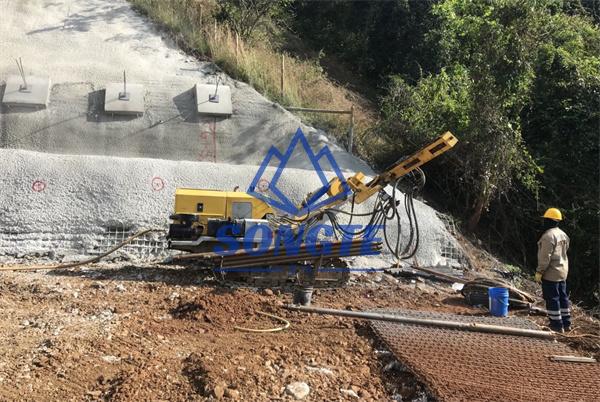The Versatility of Geotechnical Engineering Drilling Rigs
Geotechnical engineering drilling rigs are versatile tools that are used in various construction and engineering projects. They are used for soil investigation, foundation reinforcement, deep foundation pit support, ground source heat pump holes, site investigation, tunneling, slope stabilization, blasting hole engineering, and more. In this article, we will discuss the versatility of geotechnical engineering drilling rigs and their applications in different fields.
Soil investigation is an essential aspect of geotechnical engineering, and it involves drilling boreholes to collect soil samples for testing. Drilling rigs are used to drill vertical and angle holes to reach the desired depth and angle for soil sampling. The collected soil samples are then tested to determine the physical and chemical properties of the soil, which are used to design the foundation of the structure.
SD-140YA Hydraulic Multi-functional Anchoring Drilling Rig 60m

Foundation reinforcement is another application of drilling rigs in geotechnical engineering. Soil nailing, anchoring engineering, high pressure rotary jet grouting, and anti-floating anchoring are some of the techniques used for foundation reinforcement. Drilling rigs are used to drill holes for these techniques, which provide support and stability to the foundation of the structure.
Deep foundation pit support is required for high-rise buildings and structures built on soft or weak soil. Drilling rigs are used to install support systems such as steel piles, bored piles, and ground anchors to provide support to the foundation of the structure. These support systems ensure that the foundation remains stable and can withstand the weight of the structure.
Ground source heat pump holes are another application of drilling rigs in geotechnical engineering. These holes are drilled to install a ground source heat pump system that uses the earth’s heat to provide heating and cooling for buildings. Drilling rigs are used to drill vertical and angle holes for the installation of these systems.
In hydropower station engineering, drilling rigs are used for subgrade dam foundation reinforcement. Subgrade dam foundation reinforcement involves drilling holes and installing reinforcement materials such as steel bars and concrete to strengthen the foundation of the dam. Drilling rigs are used to drill vertical and angle holes for this purpose.
Railway and highway slopes require stabilization to prevent landslides and erosion. Drilling rigs are used to install anchors, grout injection, and soil nailing to provide stability to the slopes. The drilling rigs are used to drill vertical and angle holes for the installation of these stabilization systems.
Tunneling is another application of drilling rigs in geotechnical engineering. Drilling rigs are used to excavate tunnels through rock and soil for infrastructure such as highways, railways, and water supply systems. The drilling rigs are used to drill vertical and angle holes for the installation of support systems such as steel beams and concrete lining.
In conclusion, geotechnical engineering drilling rigs are versatile tools that are used in various construction and engineering projects. They are used for soil investigation, foundation reinforcement, deep foundation pit support, ground source heat pump holes, site investigation, tunneling, slope stabilization, blasting hole engineering, and more. The versatility of these drilling rigs allows engineers and construction workers to design and build stable and durable structures that can withstand various environmental conditions.
 songtemachine
songtemachine
